You’ll be amazed what’s beneath your feet, hidden from view and covered by the passage of time.
People involved with St James Church in Elstead can certainly testify as a project “fit for the future” has laid bare the building’s past.
When the builders removed an old tile and wooden floor to lay a stone update, they revealed not just the church’s medieval origins but old tombs and even a medieval crypt, complete with human remains.
Revd Hannah Moore, rector of the parish, always knew there was plenty to uncover as the church was founded around 1138 by Cistercian monks who had established Waverley Abbey.
“I used to tell people to look up to see the history,” said Hannah, pointing to the medieval wooden beams which sustain the roof.
“But I didn’t know how much was beneath our feet.
“For a start we can see the bottom of the actual wall from the earliest days. It was probably a stone wall with a wooden structure above it then.”
The church was extended with a south aisle in 1872. The Victorians were not known for their veneration of the past and the work in the church was no exception. When the wooden floor was removed a few weeks ago, the original footprint of the building was exposed along with a lot more.
Revd Moore added: “In the centre aisle we found a tomb and plaque to John Foulkes, Esq, an early 19th-century solicitor, along with at least three older tombs.
“Then, under the floor in the Victorian south aisle we found a whole medieval crypt. The Victorians had simply chipped the top of it off so that they could fit a level floor over it.”
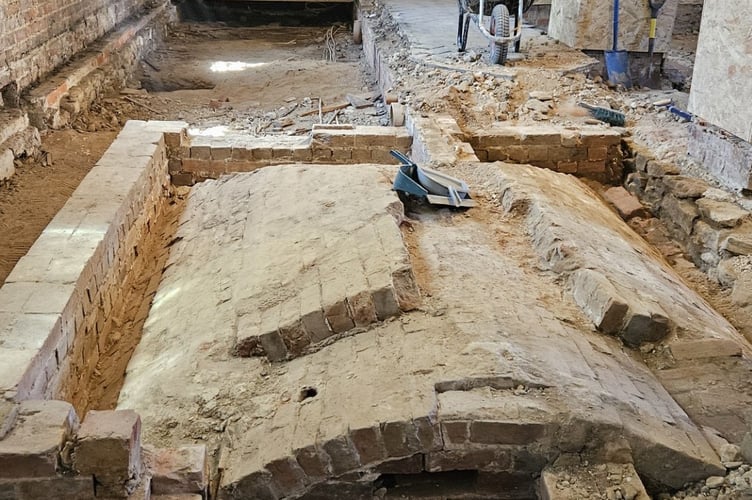
Excavating the crypt would have cost thousands, so the nearest anyone has been able to get to discovering its contents is to dislodge a loose brick and put a camera in.
“There are some bones down in the depths,” said Hannah, with human remains also being found elsewhere.
“Hayley Nicholls, the archaeologist working with us, advised us that it was best to leave them and fill the crypt with sand. So far the builders have put nearly seven tonnes in so you can tell how big it is.”
“When Hayley dug a test pit in the south aisle she also immediately found a skull. This is likely to have been from before the south aisle was built and, like the crypt, would have been outside the original church.”
In the 1850s a series of Burial Acts were passed by parliament restricting where bodies could be buried. Burial grounds were overcrowded and when an outbreak of cholera in 1848 killed 60,000 people in the UK, the government finally took action.
One of the laws meant that bodies could no longer be buried in churches.
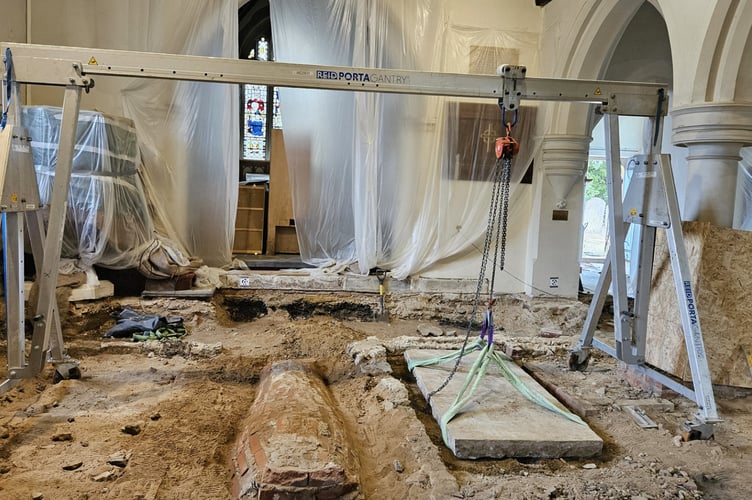
John Foulkes was buried in 1821 so no laws were contravened then, and because his tomb is still intact he is being left under the new floor.
He seems, however, to have contravened at least moral laws in his lifetime as wife, Phillipa, divorced him on the grounds of “great cruelty and adultery”.
It’s not clear why he is buried in Elstead, but perhaps one of his five illegitimate children lived there. His brother, Edward, actually went to prison for his actions, in his case bigamy.
Some later tombs may have circumvented the law as there is a tomb from 1855 in the part of the church used as the vestry.
“Charles Bushe and his son Edmund are buried there,” said Hannah.
“There’s also a child’s grave and another tomb, neither with any inscription. They were probably outside the original church as the vestry was added when the church was extended.
“But the builders seem to have used Charles Bushe’s tomb as a useful stepping stone from outside into the vestry.”
There have been further revelations. Pictures show that the organ, installed in 1875 for £180, was once in the east of the south aisle but was moved to the west end in the late 1940s.
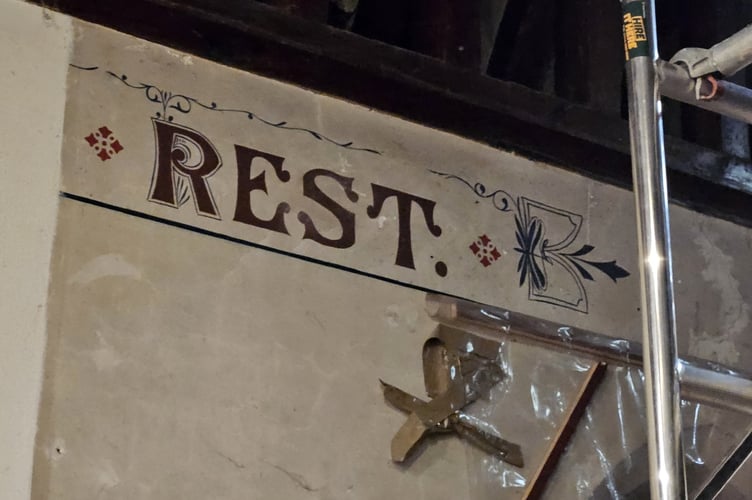
Internal walls would have been covered in murals at the time but there was a controversial tendency to whitewash church interiors around the 1960s and much was lost.
She added: “When we took out the organ we found just one word from an old wall painting remaining: the word ‘rest’.
“I expect it once said: ‘Come unto me, all ye that labour and are heavy laden, and I will give you rest’, which is from the Bible.
The medieval beams at the west end also hold clues to the past as marks in the beams suggest there was once a rood (crucifix) loft.
This would have been a gallery above a rood screen, a usually ornately carved, partition in a church. The steps to this are in one massive beam, a complete piece of timber with nine carved steps, each about 0.6 metre wide.
Until earlier this year there were also wooden pews in the church but these have gone.
“Of course there were people who claimed ‘taking out the pews is vandalism’ but the congregation has really got behind the work to create a warm, welcoming space which is also flexible,” said Hannah.
In fact, there wouldn’t have been pews in the original St James Church as these were not generally installed in churches until the 15th to 16th century.
Once the work is finished the church will have new chairs which can be moved around and the space used according to the varying needs of the community.
“This is all about the community,” said Hannah.
“We already have the Foodbank there along with a hearing aid clinic called Hear, Here, and Elevenses, a group for older people.
“They have all been squashed in the church but will be able to use it far better. In partnership with the care agency Home Instead we are going to set up a memory café and we have just appointed a children and family worker who will be running a toddler group and after-school club.
“Everything we are doing with the project is around community engagement and also to be in line with the Church of England’s deadline of church buildings being carbon neutral by 2030. So we are installing an underfloor heating system using an air source heat pump.”
All of this costs money - around £370,000 plus VAT - which has been funded by grants, fundraising activities and donations, with £60,000 still to find. There is no central Church of England fund for such works but Hannah has been deeply touched by the generosity of donors.
She concluded: “The congregation has got behind this and given what they can to ensure that the church is fit for the future.
“And change is not new. Since 1138 this church has changed in order to adapt to what is needed.
“We can see that as we have peeled back the layers of its history. People like to encase churches in aspic as Victorian treasures but they are living, breathing buildings to be used by the community.
“And that is what we are enabling here.”
For more information visit https://parishesofetsph.org.uk
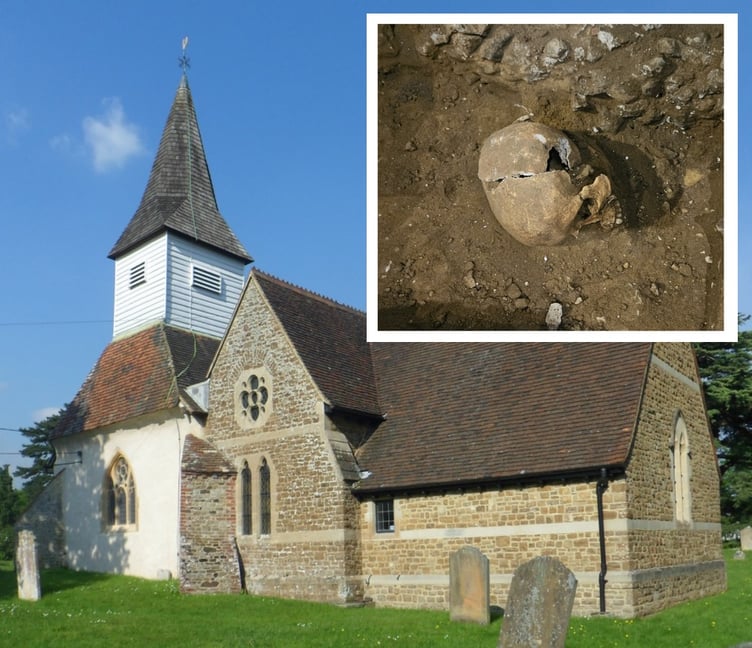


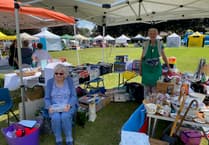


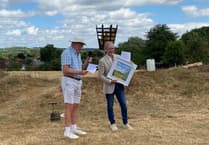
Comments
This article has no comments yet. Be the first to leave a comment.